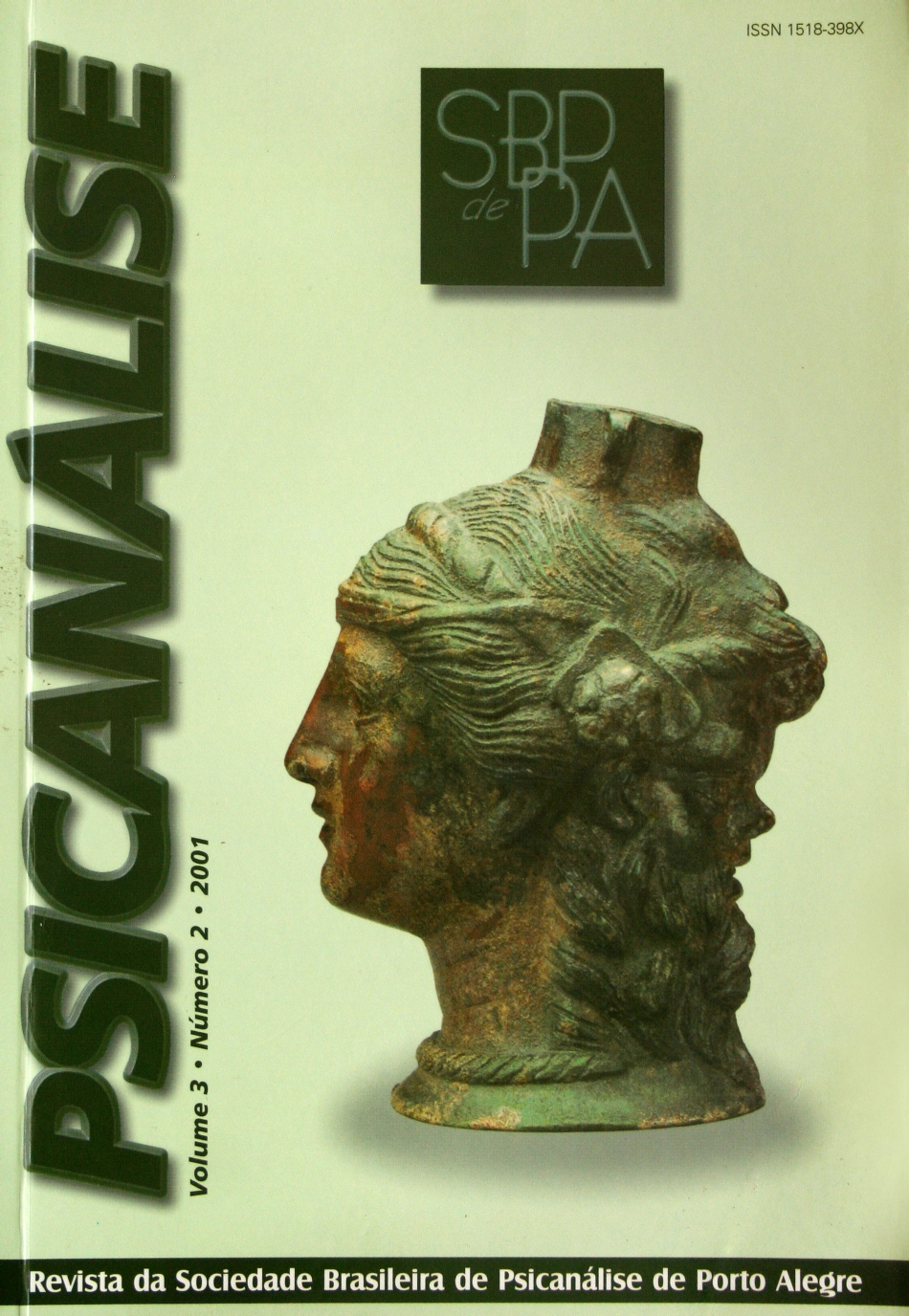O prazer perverso nos descaminhos da destrutividade
DOI:
https://doi.org/10.60106/rsbppa.v3i2.64Keywords:
Perverse pleasure, Fusion and defusion of drives, Driving economy, Self-preservation forces, Pulse of death, Primitive self-destructiveness, Inner tyranny, Border acting, Transferential acting-outs, Loving, cooperating Self, Narcissistic, destructive selfAbstract
The author presents an approach enhanced by Freud in some works for thetheoretical understanding and therapeutic approach of serious pathologies suchas narcissistic, borderline and psychotic. In 1920, 1923, 1933, 1937 and 1938, Freud pointed to the importance of valuing the phenomenon of fusion and defusionof drives for the understanding of some serious pathologies. The defusion provokesan alteration in the operativeness of the self-preservation forces, in the internal relations of the self and with objects. The inversion of the self-preservation forcesis observed in the suicide, in the melancholic, in the frames of severe negative therapeutic reaction, and serious psychosomatic disturbances. When the deathdrive, represented (performed) by the destructiveness, is defused of Eros it leadsto bordering acting. The Psychoanalysis is presented as a heroic resource in thetreatment of these disturbances. The clinical material refers to a seriously ill patient whose extreme actings were a true flirt with the death. The transference ofthese patients is always very disturbed and the countertransference is overburden. An attitude of tolerance, patience, empathy and trust in the psychoanalytic workis fundamental in the analyst’s person.
Downloads
References
FREUD, S. (1920). Além do princípio do prazer. In: Obras Completas. Rio de Janeiro: Imago, 1972. v.XVIII.
______. (1923). O ego e o id. In: Obras Completas. Rio de Janeiro: Imago, 1972. v.XIX.
______. (192033). Novas conferências introdutórias sobre psicanálise. In: Obras Completas. Rio de Janeiro: Imago, 1972. v.XXII.
_____. (1937). Análise terminável e interminável. In: Obras Completas. Rio de Janeiro: Imago, 1972. v.XVIII.
______. (1940[1938]). Esboço de psicanálise. In: Obras Completas. Rio de Janeiro: Imago, 1972. v.XXIII.
HARTMANN, H. (1948). Comments on the psychoanalytic theory of instinctual drives. Psychoanalytic Quarterly, v.XVII, p.368-88.
______. (1955). Notes on the theory of sublimation. In: The psychoanalytic study of the child. New York: International Universities Press. p.9-29.
KERNBERG, O. (1975). Borderline conditions and pathological narcissism. New York: Jason Aronson, 1976.
LAPLANCHE, J., PONTALIS, B. Vocabulário de psicanálise. São Paulo: Martins Fontes, 1970.
MALDAVSKY, D. Comunicação pessoal.
ROSA, M.A. Contribuição ao estudo do narcisismo patológico. Revista Brasileira de Psicanálise, v.17, p.301, 1983.
ROSENFELD, H. (1971). A clinical approach to the psychoalytic. Theory of the life and death instinct: an investigation into the aggressive aspects of narcissism. Int. J. Psycho Anal., v.52, p.169.
______. (1987). Impasse e interpretação. Rio de Janeiro: Imago, 1988.
Downloads
Published
How to Cite
Issue
Section
License
I attribute the copyrights that belong to me, on this work, to SBPdePA, which may use and publish it by the means it deems appropriate, including on the Internet or in any other computer processing.
















